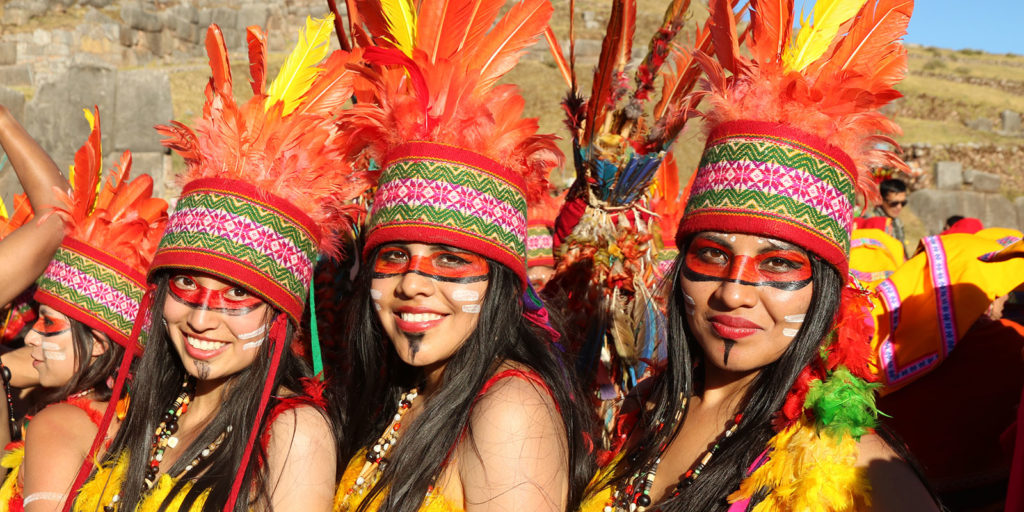Inti Raymi is the Inca new year celebration that peaks on June 24. It honors Inti, the ancient Inca god who is represented by the sun, and was the source of the Inca king’s power and authority.
It’s midsummer in the north, but midwinter in the southern hemisphere. Former Inca lands include coastline and high Andes mountains where it gets very cold in winter. The sun is essential to both survival and agriculture.
Indigenous peoples have a close symbiotic (mutually beneficial) relationship with the land and are often good astronomers. The winter solstice (longest night of the year) just passed in the southern hemisphere. Ancients around the world watched the days shorten as the winter solstice approached, and worried that the sun might just fade away completely.
The purpose of the Inti Raymi is to bring back the sun. It’s just like winter solstice rituals around the world and across time.
The Ancient Inti Raymi Celebration
The festival was held in the main plaza of Cuzco, Peru, the old Inca capital.
Community leaders would gather at the palace of the Inca king to bring back the sun. After a purification fast, the king would offer a feast with lots of chicha (Inca corn beer). The festival included a parade of mummies and llama sacrifices.
The last traditional Inti Raymi was in 1572 after which the Spaniards banned it. As usual, the old Catholic priests demonized traditional practices, called them evil, shut them down, and destroyed everything associated with traditional faith. They were in competition and refused to see that while faiths may look different on the surface, underneath they are all pretty much the same.
The Modern Inti Raymi Celebration
Today’s Inti Raymi is a cultural celebration that reenacts the ancient ceremonies. It was recovered by Indigenous groups in the mid-20th century.
It’s still held in Cuzco. Similar festivals are held throughout the former Inca Empire, but this is the big one. It’s a huge festival with thousands of reenactors and hundreds of thousands of visitors.
The most prestigious acting roles are the Inca king and queen, the Sapa Inca and Mama Occla.
For about a week, the roads around Cuzco’s main plaza become a big street fair. There are ceremonial reenactments with feasting, music and dancing in the evenings.
June 24 is the big day filled with ceremonies. It starts in front of Santo Domingo church which was built over an ancient Sun Temple. After blessings, the Sapa Inca is carried on a golden throne in a procession to the ancient Inca fortress of Sacsayhuamán in the hills above Cusco.
There the Sapa Inca climbs the sacred altar, gives a speech and performs a theatrical llama sacrifice (it’s not real). Just like you would imagine from watching movies, the Sapa Inca holds the animal’s heart aloft as an offering to Pachamama (Mother Earth).
At sunset, people dance around bonfires to honor Tawantinsuty, the Realm of the Four Parts which represents the territories of the Inca Empire in Peru, Ecuador, Bolivia, Chile and Argentina. Then the procession returns to Cuzco.

